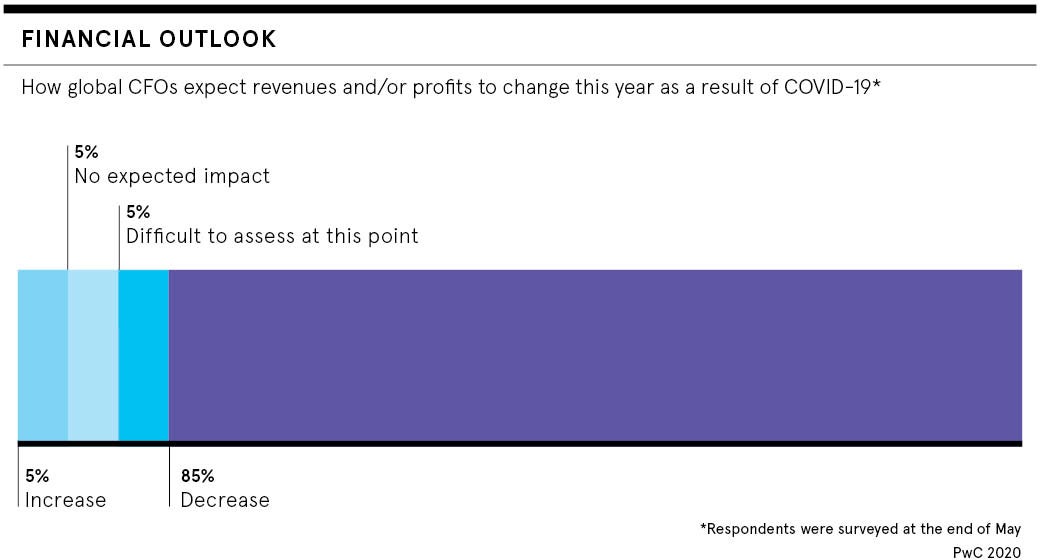Scrambling up the other side of the U or V-shaped economic graph post-coronavirus is not going to be pretty for sales teams. It’ll be very difficult to meet targets when there are real issues around client liquidity. Old partners may have gone under, while new prospects won’t necessarily want a face-to-face meeting. Everyone will have to realign their sales strategy at speed if they’re to stay in business.
The hot topics after lockdown will be around mitigating risk in the short term and value creation in the long term. Purchasing will be slow in the worst economic slump since the Great Depression. It will also be a buyer’s market for a long time to come. Price will be a prime factor when cash flow is scarce now the Great Retrenchment is upon is, but there are opportunities.
“This is not a market for selling; it’s a market to be close to your customers, to get intimate, understand their business needs and the needs of their employees on a more personal basis,” says Andrew Hough, chief executive of the Association of Professional Sales (APS). “The challenge will be about achieving authenticity and humanity in the sales process. This has not been around for a long time. Connecting with people will also be crucial.”
The hard graft starts right now if businesses are to win sales when commercial life resumes after lockdown. The “we are all in this together” mantra actually works with buyers since COVID-19 is a worldwide phenomenon; its effects are also systemic and wide ranging across global supply chains. Solidarity and empathy today will build relationships tomorrow.
“Top performers are starting to pivot their sales strategy, so it’s aligned with the most pressing needs of their clients. Prior to the pandemic, the message may have been about efficiency and financial impact. Afterwards it will focus on speed to market, competitive advantage and being nimble. The underlying product or service hasn’t changed, but the way it’s presented should,” says Ian Altman, a business-to-business growth expert and bestselling author of Same Side Selling.
Content creation key to adding value
Adding value is increasingly being delivered by sales teams through content creation. There is a plethora of webinars, LinkedIn how-to’s, elearning or Zoom webcasts. Online advice is legion. Expect more; those with a razor-sharp focus will address customer painpoints and how they can solve them, rather than flogging products or services.
“It shouldn’t have to take a global pandemic to make salespeople put their feet in the shoes of the customer, but in some cases it has. Being able to demonstrate that you can solve their pain and make their business perform better should be the guiding principle from which everything else flows,” says Richard Lane, co-founder and chief executive of Durhamlane, a demand and lead-generation specialist.

The shift to digital as the basis for all sales strategies is set to continue in life after lockdown. What would have taken businesses five years in a “normal” environment occurred in a few months. Not only did it nullify overnight go-to market strategies dependent on onsite visits, it gave a boost to products that were accessible and easy to procure online. Social selling is now reaching fever pitch.
“Businesses that have been using outdated sales and onboarding methods, and indeed lagging in digital transformation more broadly, have been forced to evolve quickly and there’s no going back. Zoom is now an absolute must. Webinars are crucial. I’ve found that I’ve attended ten times the number of webinars in the past few months, than in the past. Your content must be online,” says Jordan Ryan, vice president of sales for Europe, Middle East and Africa at Malwarebytes.
A new world order post pandemic
An increasingly popular sales strategy is to offer free services to assist distraught companies to hook in paying customers after the crisis. Another model being considered involves taking on a whole new market when business fully resumes after lockdown.
“The D2C, or direct-to-consumer, model could explode, not only in consumer products, but also in business to business as well. Those companies considering their supply chains and distribution efficiencies may see an opportunity for this sales strategy, particularly if their retail sales channels have been severely affected by store closures or distribution issues,” says Richard Mathias, senior technology architect at LiveArea.
In the next few years, not a lot of money is going to be spent, until confidence returns. Agile sales teams who move resources rapidly to sectors that spend will win. The APS believes there will also be a shift back to the 1990s in how we sell.
“This is when soft skills used to be more valued. A time when you had customer intimacy, you had customer knowledge, you had customer centricity. You behaved in a way that allowed the customer to feel confident you were the person they wanted to deal with. It’s going to be a key differentiator going forwards,” the APS’s Hough concludes.
Content creation key to adding value



